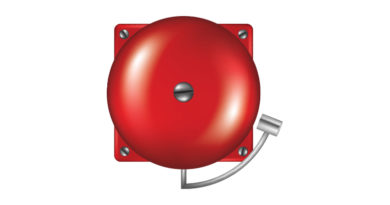Essential Infrastructure for Tech Facilities: Why, What and How
By Sherita T. Ceasar
From new streaming video opportunities to IoT options and Wi-Fi networking, the way cable leverages its networks to meet customers’ needs is undergoing waves of transformation. In recent years, the pace of evolution from traditional video architectures to more agile IP networks has quickened and shows no sign of slowing down anytime soon.
As the industry steps away from classic video delivery paradigms, it is realizing a rare opportunity to rethink the access network and the technical facility supporting infrastructure. Following on the evolution of national data centers and regional area networks into backbones for terrestrial delivery of content, cable is introducing new capabilities into access facilities to execute on business initiatives planned for the next three to five years.
Networks that originally were created as a result of acquisition and consolidation are being examined in the new light of holistic network strategies. Facility readiness, capacity planning and capital investment decisions will be impacted by the equipment, processes, monitoring and operations that are essential to the delivery of IP-based services, as well as by the need to power and cool these technical facilities. In addition, expertise, standards and operational practices — such as those being created in collaboration with SCTE•ISBE — are required to ensure that the industry has the resources needed to gain maximum benefit from this transition.
In an IP world, cable facilities such as master headends that generate broadcast and narrowcast lineups and feed hubs and optical transfer nodes, are transitioning to new roles as local data centers. As deployment is moved closer to the edge and proactive core facility readiness increases in importance, the need is growing for essential infrastructure systems — such as HVAC, DC plants and back-up generators. Additionally, equipment must meet standards and telemetry expectations, and there is need for trained technicians that can ensure the availability of new technology platforms to deliver the best customer experience.
What does this mean for the industry? At a high level, it requires a long-range view of product and service capabilities that will inform network needs and a case-by-case assessment of facilities. In the transition to IP, facilities likely will fall into four separate categories: Those that can be eliminated as no longer required; those that can continue to be operated as is, without notable additional investment; those that must be hardened to play more significant roles in the network; and new facilities that must be constructed to meet emerging needs. Among the considerations that factor in these decisions are:
- The topography of each location and its network connectivity, as well as the suitability to the envisioned technical requirements;
- The ability to support equipment powering and cooling of the desired platforms or services;
- Space requirements for servers, switches, routers and other technology that is needed to deliver desired platform or service applications;
- Assurance that physical and cyber security needs can be adequately addressed; and
- The need to ensure that sufficient connectivity exists to enable application developers to leverage the computing capabilities of the installed appliances.
One of the most important developments during this transition has been the recognition of how new educational resources, standards and operational practices are required, as well as the need for subject matter experts to support project planning and execution. In partnership with SCTE•ISBE, an essential network infrastructure curriculum is being developed to support the industry’s transformation. A key objective is to enable current and new members of our workforce to support the transition, while ensuring that we continue to dedicate the highest levels of support to existing networks.
From the earliest days of cable, access network facilities have been strategic assets for our industry. As we enter a new era of unparalleled IP service flexibility, the capabilities of the access networks and the essential infrastructure that powers them are table stakes for our future success.

Sherita T. Ceasar
Senior Vice President of Technology Environments and Strategy
Comcast Cable
Sherita leads strategy, design, build, and support of Comcast engineering laboratory operations and strategic planning supporting technology/product roadmaps for 1600+ technical facilities within Comcast’s Next Generation Access Network organization. She has 35+ years in the telecommunications industry shaping and delivering innovative technologies, including the first Comcast Universal Caller ID cross platform application and both remote and Cloud DVR, among others. She is on the national board of WICT and is past National President of the Society of Women Engineers.
Shutterstock




